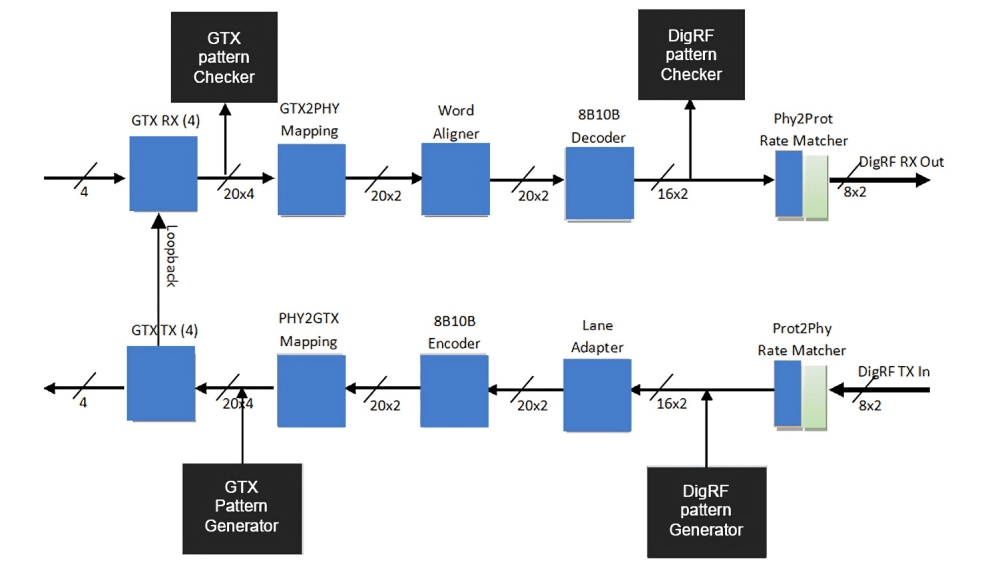High-speed transceivers are essential to modern communication systems because they make it possible for data to be transmitted quickly across a variety of platforms.
With an emphasis on the Gigabit Transceiver Block (GTX) and Gigabit Transceiver Block (GXB), this blog delves into the principles of high-speed transceivers.
With their ability to function at up to 12 Gbps, these components enable high-performance data transfer in a variety of applications, including high-speed networking and telecommunications.
What is High-Speed Transceivers
High-speed transceivers, which are made to send and receive data at extremely high speeds over serial lines, are essential parts of contemporary digital communication systems.
Specialized integrated circuits known as high-speed transceivers enable the quick sending and receiving of digital messages via serial communication lines.
They are essential to contemporary electronic systems because they allow high-bandwidth data transfer, which is required for applications in several industries, including data centers, telecommunications, automotive, and aerospace.
GTX (Gigabit Transceiver) and GXB (Gigabit Transceiver Block)
High-speed transceivers play a crucial role in digital communication, enabling rapid data transmission. Some of the common types include:
- Gigabit Transceivers (GT)
- 10G Transceivers
- Xilinx GTX Transceivers
- Intel GXB Transceivers
- CML (Current Mode Logic) Transceivers
- SerDes (Serializer/Deserializer) Transceivers
Among these, GTX and GXB transceivers are notable for their capabilities in FPGA designs, offering unique solutions for high-speed communication.
Let’s dive deeper into what makes GTX and GXB transceivers stand out in their specific applications.
Gigabit Transceivers (GTX)
Signal names and terminology are the same as those used with Xilinx FPGA.
Although the transceiver is known as a GTX (Gigabit Transceiver), other transceiver variations, such as GTH and GTZ, are essentially the same parts with varying bandwidth capacities.
A growing number of FPGAs are using GTXs, the fundamental building component of standard interface protocols like PCIe and SATA, to communicate with one another.
One could mistake the GTX instance for a straightforward channel that transfers data to the other end in a foolproof fashion because it is composed of a clock and parallel data interface.
Given the potential bit errors and the requirement to synchronize serial-to-parallel data alignment at the receiver, a more realistic representation of the GTX would be a modem front end.
Designing with the GTX also necessitates paying attention to traditional communication-related subjects, such as the application of equalizers, scramblers, and data encoding.
Gigabit Transceiver Block (GXB)
Gigabit Transceiver Blocks, or GXBs, are high-speed transceiver components that are mostly found in FPGAs made by Intel (previously Altera).
Because of its ability to manage data transmission and reception over high-speed serial networks, it can be used with Ethernet, Fiber Channel, PCI Express, and other protocols that demand quick data rates.
Data alignment, clock recovery, serialization, and deserialization are all handled by the GXB to facilitate data transfer.
It is crucial for systems needing large bandwidth and low latency connections since it offers strong signal integrity and supports a variety of communication formats.
In order to prevent signal deterioration over extended distances and facilitate effective communication in intricate, fast-paced settings, GXB transceivers frequently incorporate sophisticated equalization algorithms.
They are an essential part of FPGA-based designs and communication systems due to their versatility and flexibility.
High-speed transceivers (GTX, GXB) running up to 12 Gbps
High-speed transceivers (GTX) are one of the key expertise when working with high-speed FPGA design. Some of the example where it may be required is given below
- For different high-speed interfaces e.g. PCIe (8 Gbps), Gigabit Ethernet, SRIO, USB 3.0.
- To connect between FPGA and DSP using SRIO.
- In Optical Transport Network (OTN) up-to (OTN1) 2.5G, (OTN2) 10G, and (OTN3) 40G.

Logic-Fruit has worked on high-speed GTX for PCIe Gen3, DigRFv4 and SRIO. We’ve worked GTX speed up to 8Gbps.
We’ve also worked on 8b to 10b, and 128 to 130-bit encoding schemes. We’ve also worked on the design where the GTX is run at an oversampled clock (integer or fractional oversampling ratio), and then a data recovery unit (DRU) is used outside the GTX IP to down-sample the data.
Conclusion
In conclusion, for quick and effective data transfer, high-speed transceivers such as GTX and GXB are essential.
These transceivers support a variety of applications, including networking and telecommunications, with speeds up to 12 Gbps.
Their contribution to improving communication skills will only increase as technology advances, making them crucial for system makers looking to maximize efficiency.
Logic Fruit Technologies specializes in advanced transceiver solutions, such as JESD204B/C, JESD204D, and CPRI transceivers, to satisfy the increasing demands of high-performance signal processing and contemporary telecommunications.
Our CPRI Master and Slave RTL IP Core are specifically designed for seamless wireless communication, effectively connecting radio units to baseband units in telecom networks.
This ensures robust data transmission critical for 5G infrastructure and beyond, enabling faster, more reliable mobile connectivity.
The JESD204B, JESD204C, and JESD204D transceivers developed by Logic Fruit are optimized for high-speed data conversion, facilitating efficient connections between ADCs and DACs to FPGAs.
These transceivers support higher data rates and improved performance, making them ideal for applications such as radar systems and other high-performance signal-processing tasks.


![PCIe 6.0 – All You Need To Know About PCIe 6.0 [2025]](https://www.logic-fruit.com/wp-content/uploads/2025/09/PCIe-6.0-Thumbnail-1024x538-1.jpg)






